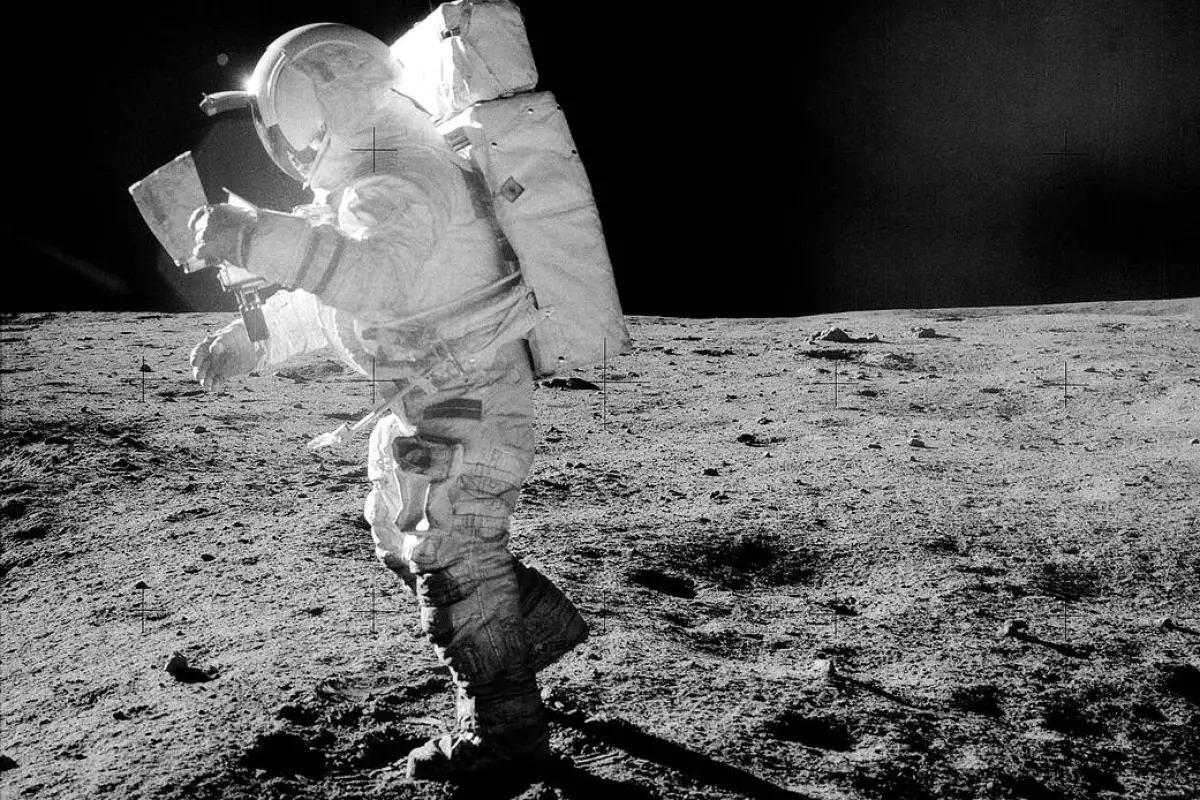Blasting spacesuits with a beam of electrons could cause jagged, abrasive particles of moon dust to leap right off them, according to a newly published study. Apollo-era astronauts noted that the sticky, troublesome nature of lunar dust caused equipment and health issues the last time humans set foot on the Moon, and finding a way to deal with the sharp particles is a priority for NASA and other agencies around the world.
NASA and its partners have embarked on a marathon endeavor to put American boots on Mars for the first time in human history, but the agency’s first destination is set to be a little closer to home. Countless technologies have to be invented and tested before a crewed trip to the Red Planet could even be considered feasible, most notably those needed to keep astronauts alive and healthy as they explore the Martian surface.
The closest and most obvious celestial testing ground upon which NASA can put these technologies to the test is one we have a passing familiarity with – the Moon. Earth’s natural satellite has a number of advantages when it comes to crewed exploration, most notably its proximity to our planet, but it also has its drawbacks.
One detractor is practically inescapable for any mission touching down on the Moon’s surface, whether it be human-led or robotic – the troublesome nature of lunar dust.
The Moon’s surface is coated in a thick layer of dust, or regolith as scientists call it, and it proved to be a serious issue to astronauts who explored Earth’s satellite during the Apollo era.
The fine particles are nothing like their terrestrial namesake. Regolith is sharp and is saturated with solar radiation, which gives it a positive charge, and as a result the upsetting tendency to adhere to any surface with which it comes into contact. What’s worse, in the low-gravity lunar environment, it's easily kicked up by astronaut boots or naturally occurring phenomenon like micrometeorite impacts.
Apollo astronauts reported that the regolith damaged spacesuits, coated equipment, reduced the performance of thermal control surfaces, and was even detrimental to the health of astronauts. It also has the potential to obscure solar panels, reducing their ability to generate the electricity needed to keep a potential Moon base functioning.
A new University of Colorado at Boulder-led study has shown that an electron beam could be an effective weapon in the future war to keep spacesuits and other key pieces of equipment clean on the lunar surface.
The researchers behind the study placed material samples including a glass plate and a sample of an Apollo spacesuit inside a vacuum chamber. These surfaces were covered in various amounts of "lunar simulant" – a NASA-manufactured stand-in that mimics the properties of regolith.
A stream of electrons were then fired at the samples in an attempt to dislodge the dust. In theory, electrons would be able to penetrate the top layer of particles and strike those beneath, causing secondary electrons, which are also known as photoelectrons, to be emitted. A fraction of these secondary particles are then absorbed into the microcavities separating the particles, depositing negative charges in the surrounding particles.
If enough electrons are fired at the simulated regolith, the buildup of negative charges on the fine dust-like particles would cause them to repel one another with enough force to overcome the forces holding them together. This would essentially cause the particles to jump off the material.
After being hit with the beam of concentrated, low-energy electrons, the majority of the dust particles coating the particles were indeed observed to fly away. The success of the electron cleaning was dependent on the thickness of the regolith coating, however an average of 75 – 85 percent of the fine particles were removed overall.
The researchers suggest that a hybrid strategy of electron beams and brushes could be used by future astronauts to keep their gear in order.
Studies like this may lack glamour, but they are essential if humanity is to establish a lasting presence on another world. Astronauts cannot explore without spacesuits or electricity, and frankly, an electron beam cleaning kit strikes me as a suitably sci-fi solution to the very real headache of lunar dust.
A paper on the research has been published in the journal Acta Astronautica.




